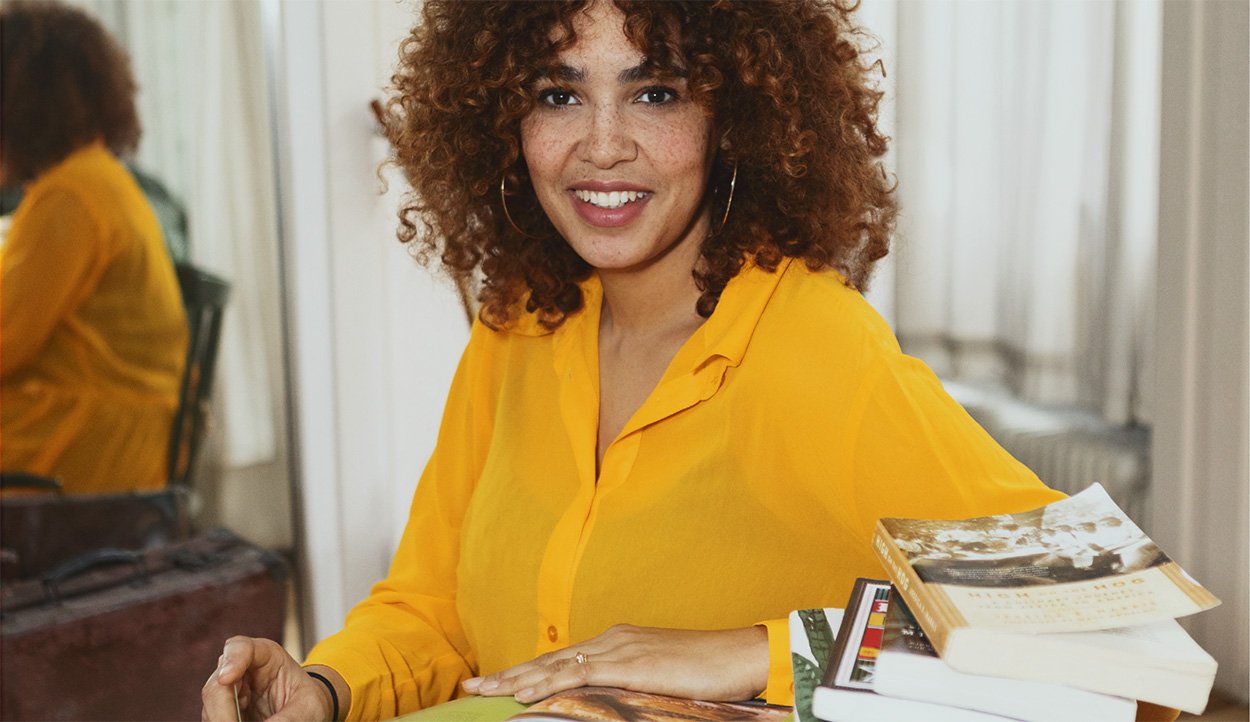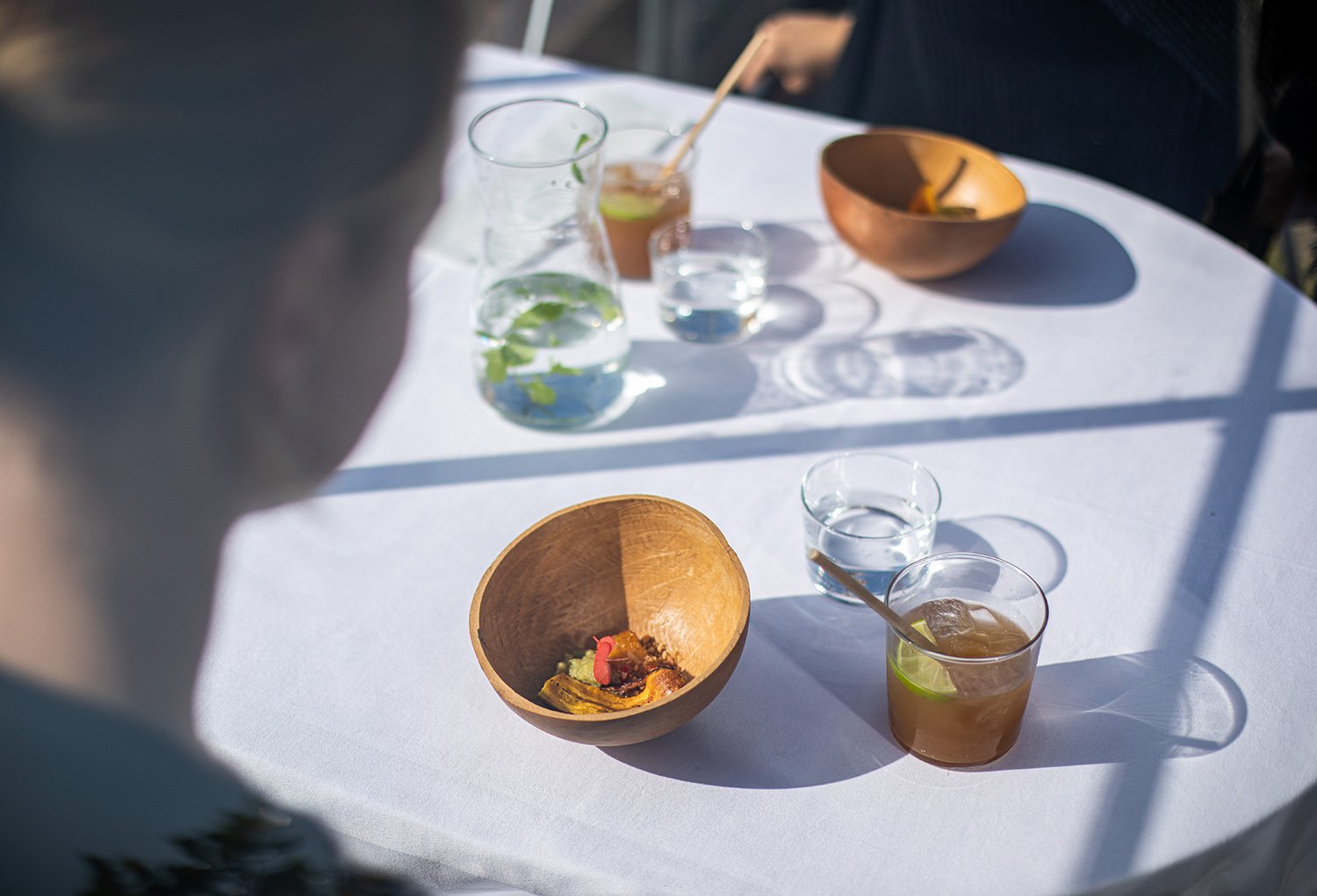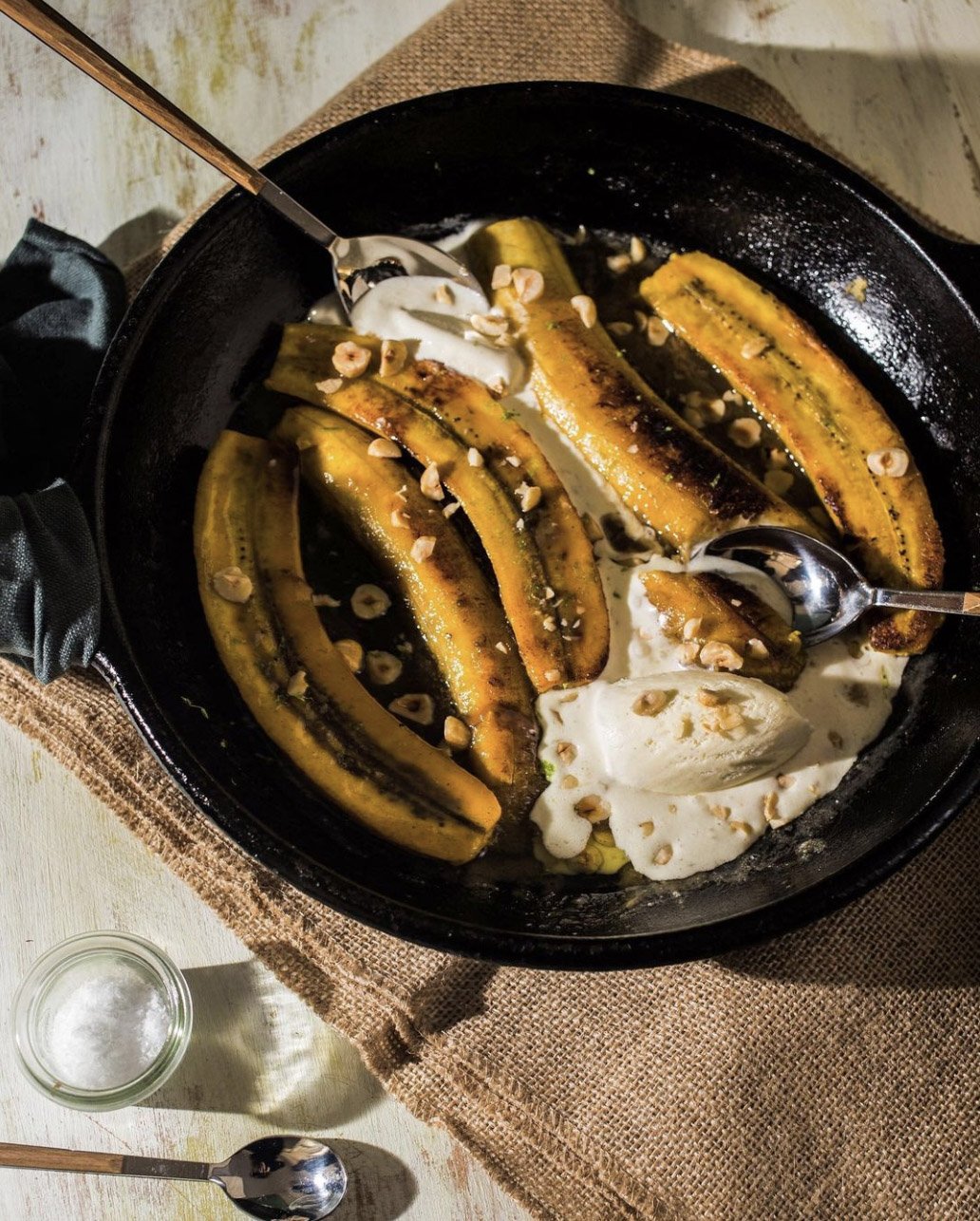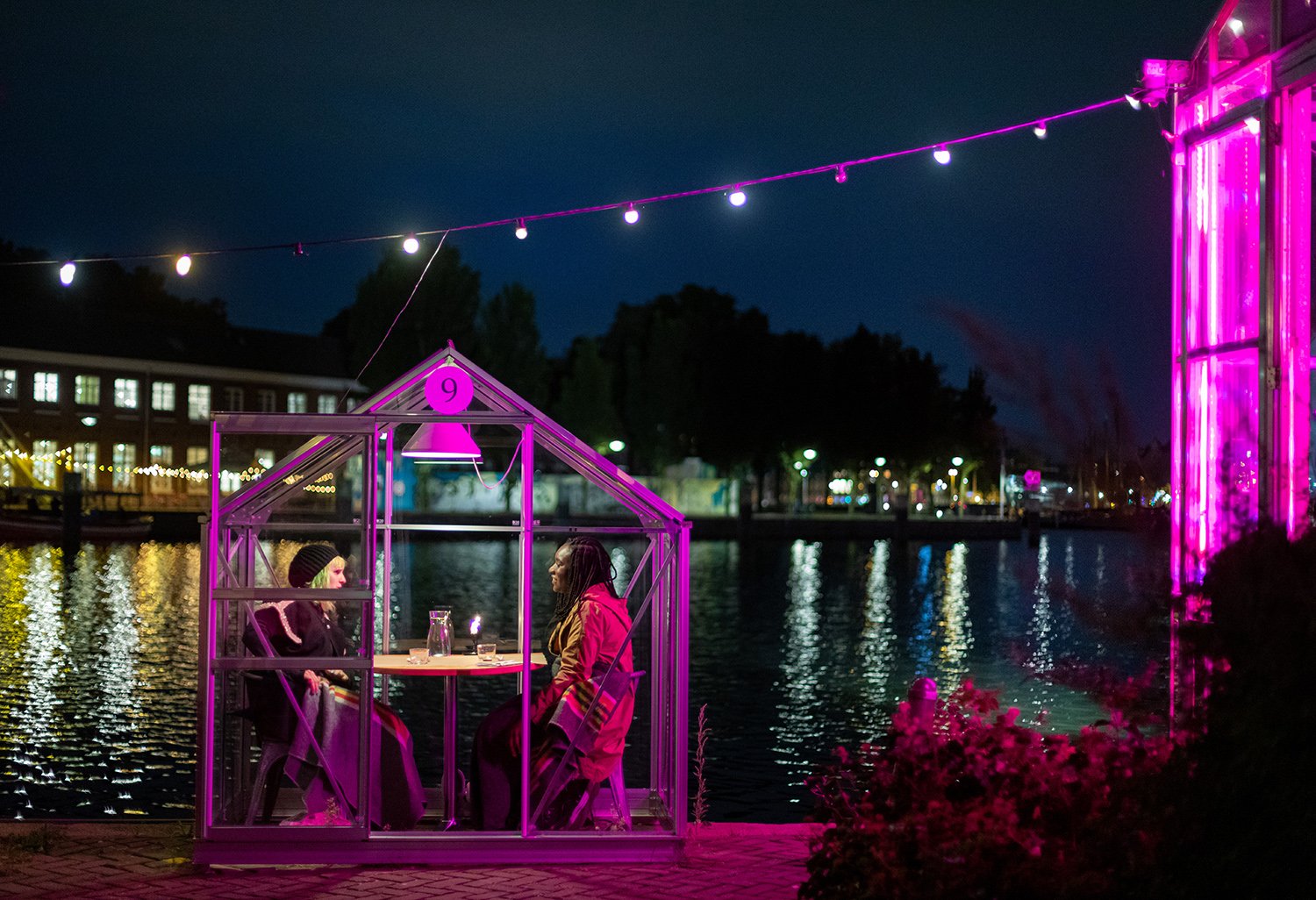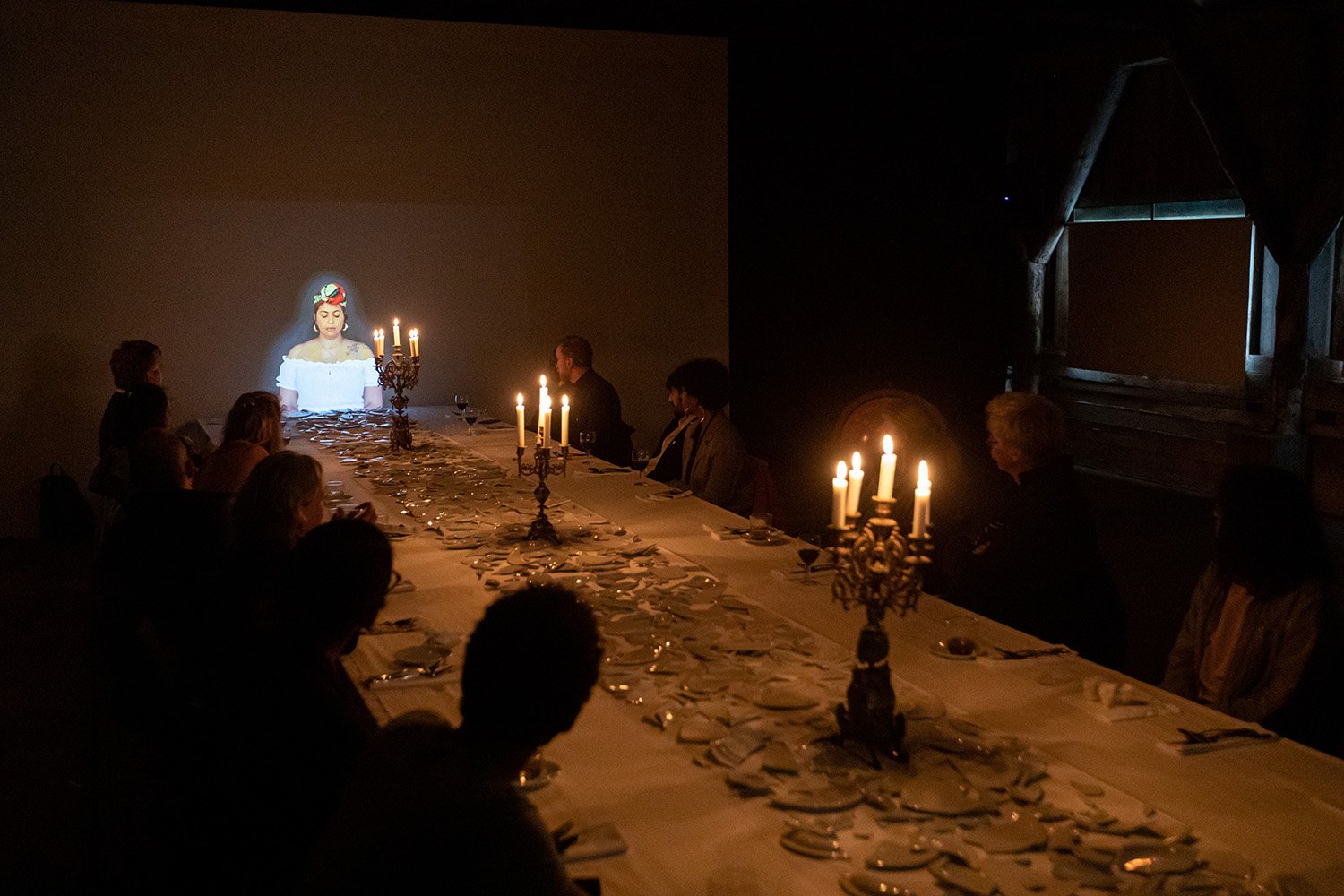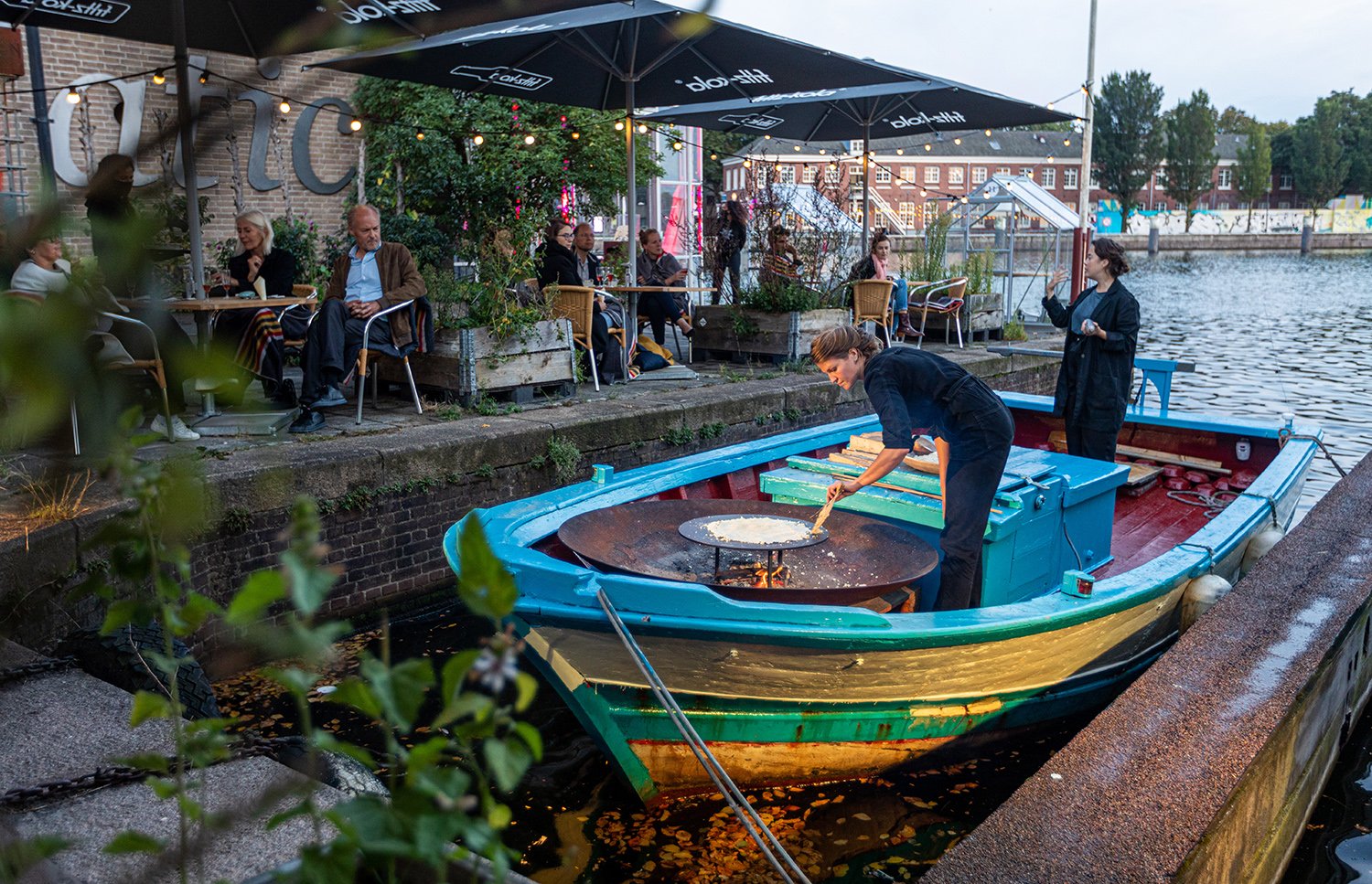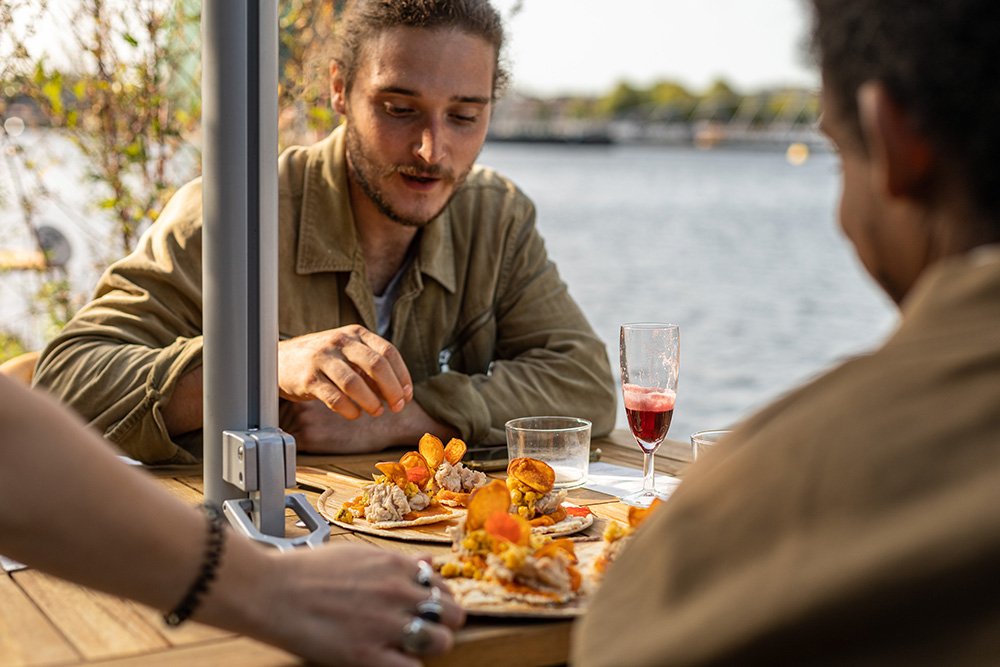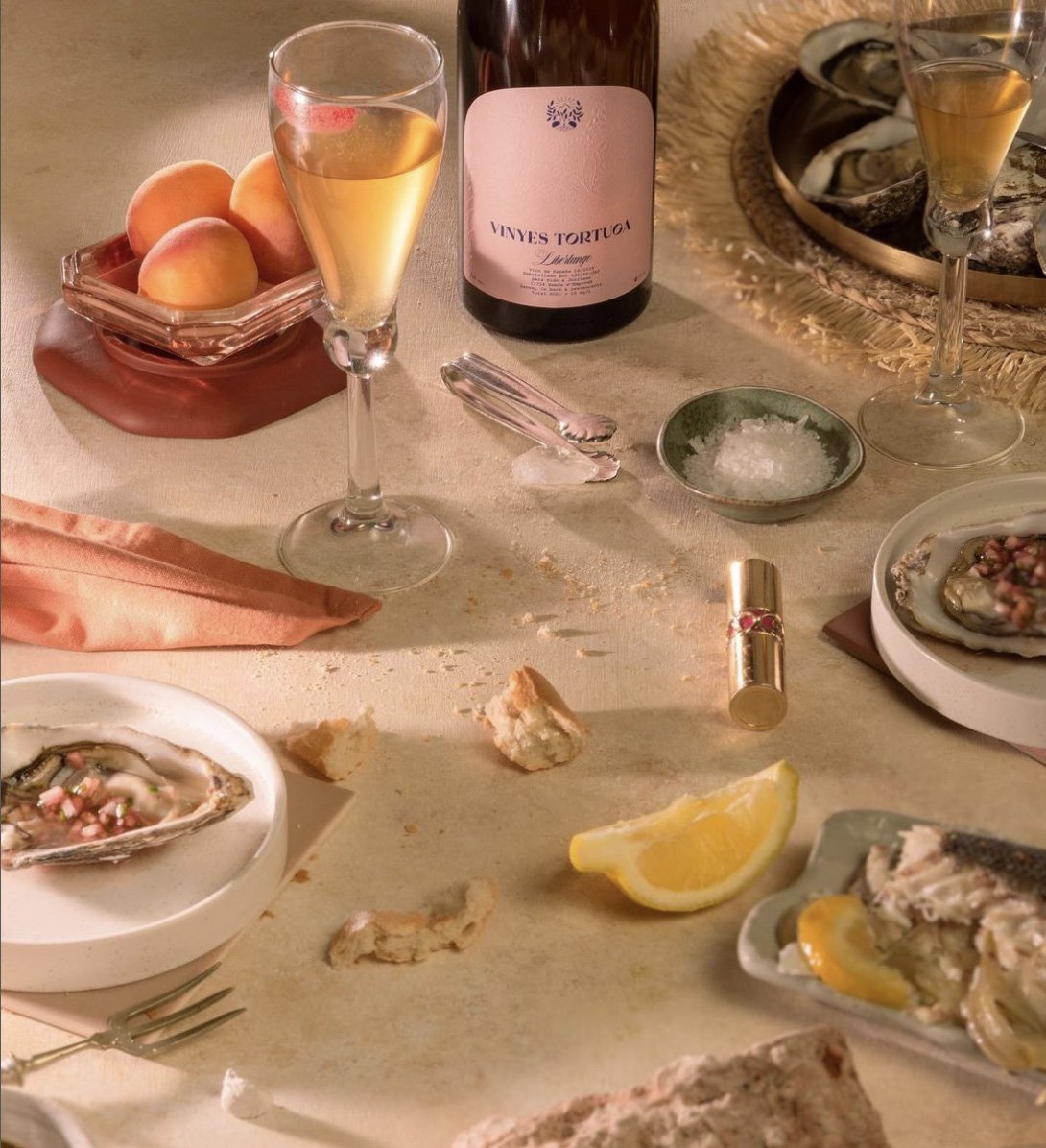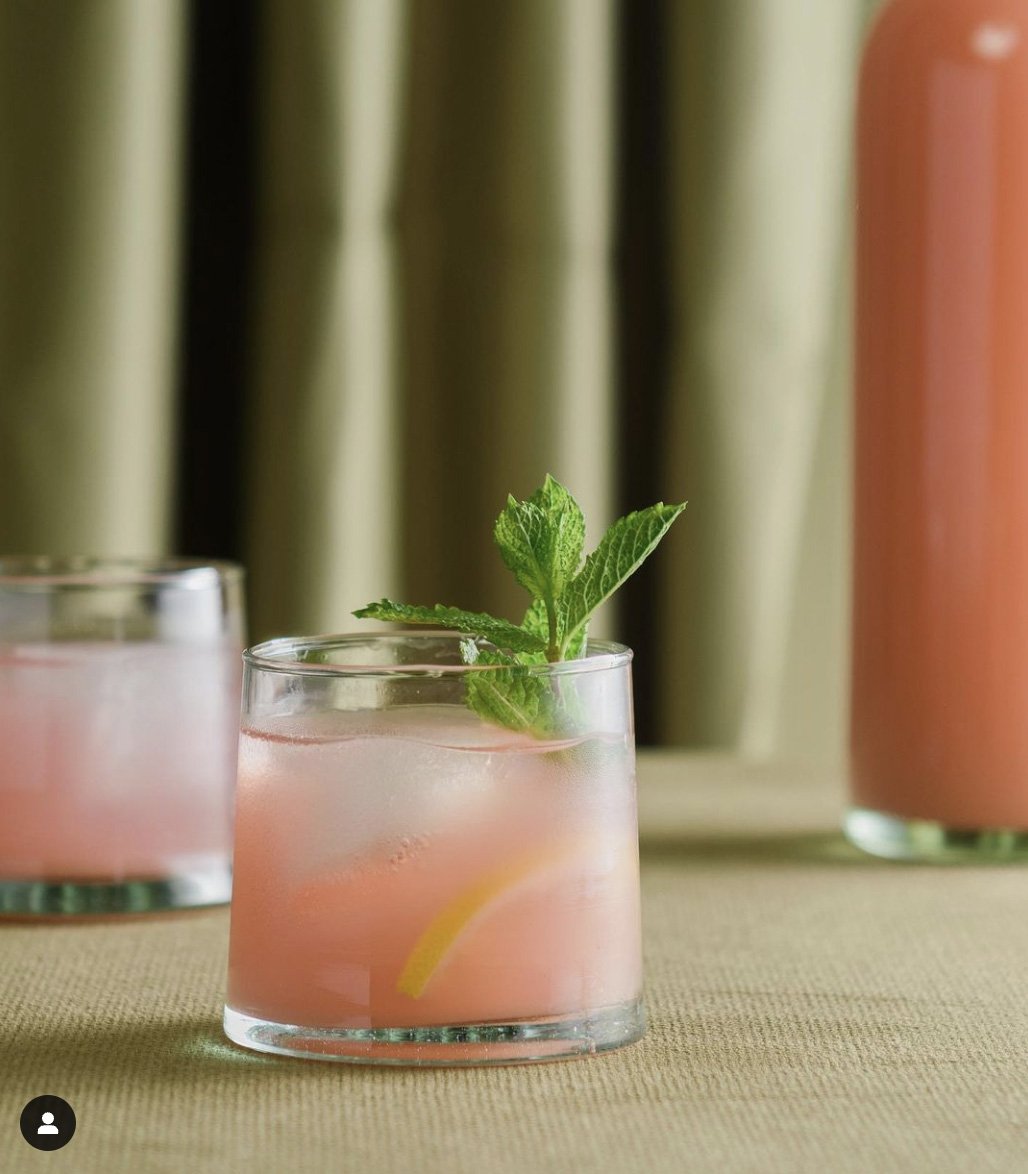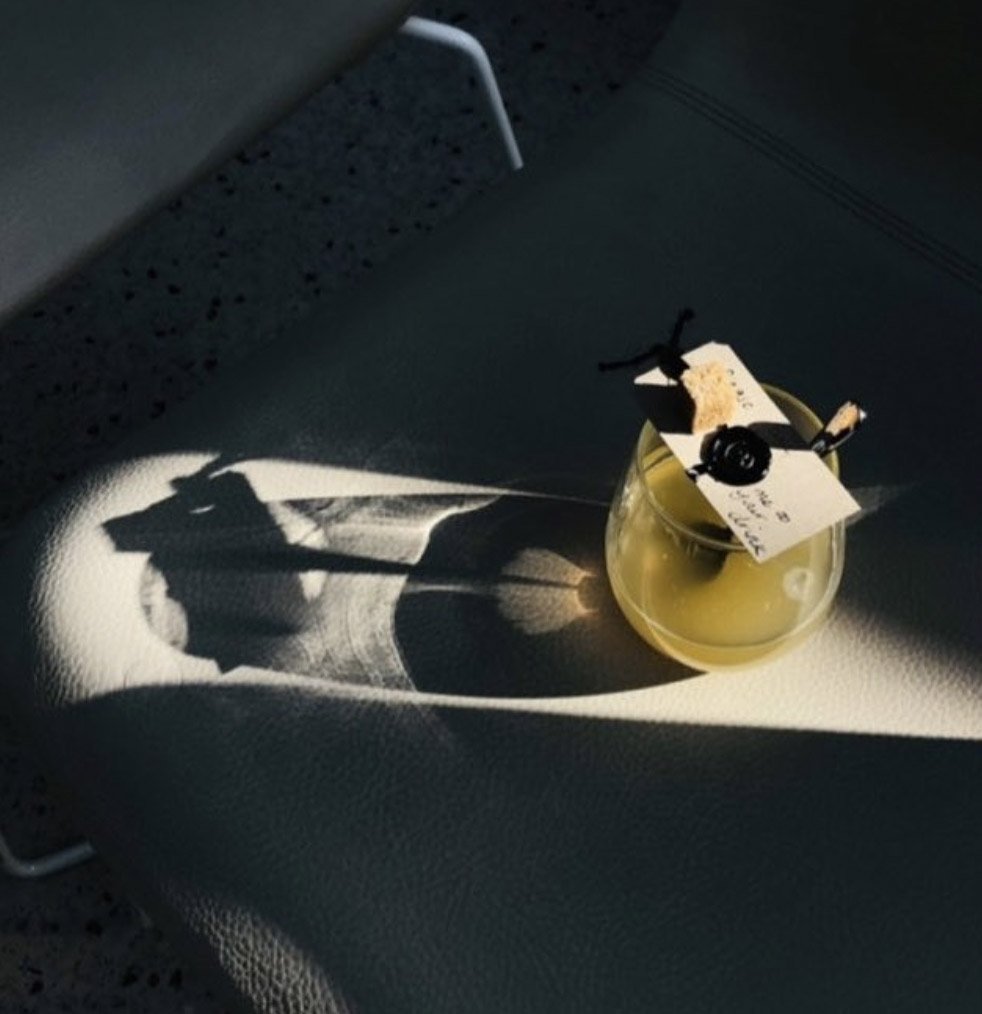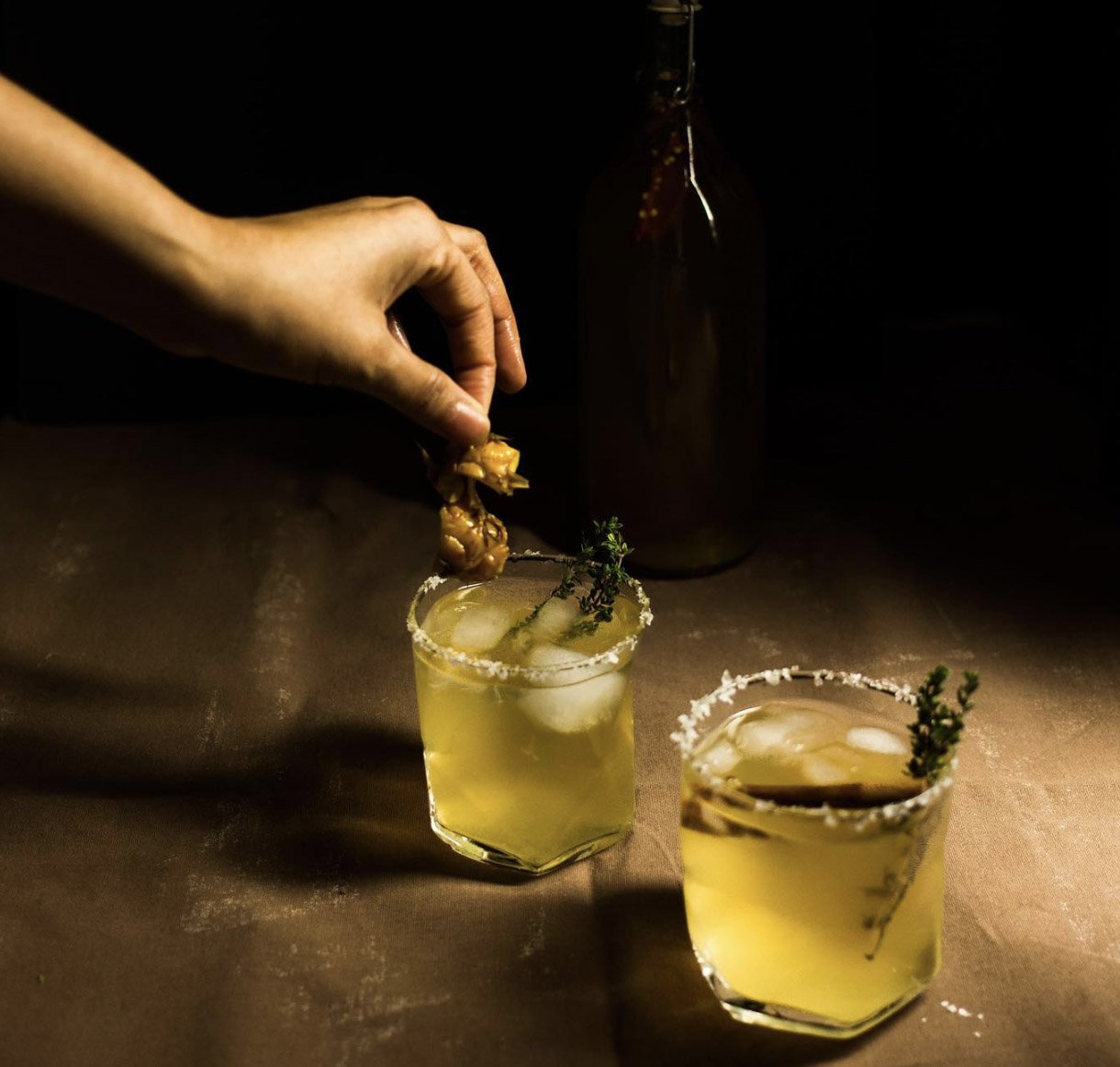Digesting History: Food and Colonialism with Lelani Lewis
Welcome to our “Redefining Luxury” interview series. Our main aim here is to contemplate the essence of luxury and explore its many forms and definitions. Through open conversations with creators, entrepreneurs, and passionate individuals we talk about the process behind designing luxurious, pleasurable, yet thoughtful creations and their importance in the modern world. In search of joy, marvel, and inspiration.
Up next: food stylist, chef, and culinary activist: Lelani Lewis.
South London born and raised, with Grenadian and Irish heritage, Lelani was immersed into a whole plethora of cuisines growing up, which has shaped her passion for paying homage to Carribbean food and culture. Her deep connection to culinary history translates into unique projects, such as Code Noir and Whisk Food Studio, which she puts a lot of love into, alongside doing educational workshops, engaging talks and raising her son. I truly admire the purpose behind Lelani’s cooking and the book she is working on, and since we connected in person, we discovered a shared passion for change in the food system and healthy soils. It’s been a pleasure to sit down and talk to Lelani about her roots, inspiration, her journey and future aspirations.
CARRIACOU KITCHEN
Back in London, Lelani was working as a Project Manager for different charities for many years. Working with homeless, disabled young people, and people who were excluded from the mainstream systems. She originally studied food technology in school and seemed to have a real talent for it according to her mentors. Her father, having some experience in restaurants himself, wasn’t too fond of the idea of her getting into this field, but later on in life, in search of a deeper purpose within herself, Lelani got inspired and began to slowly dip her toes back in the food industry. Sparked by the undercurrent of pop-up restaurants happening all over London, she started a pop-up called “Carriacou Kitchen” with her cousin.
“My dad is from an island called Grenada, and there’s this tiny island off it called Carriacou, which has got the greenest crystal-clear waters with fish swimming in them and clear white sand. The aim of our Carriacou Kitchen pop-up was to elevate Caribbean food. We did a dinner for about forty people. When I look back, I think of the state of the kitchen… it looked like everything had exploded. None of us had any experience, we didn’t know how to organize ourselves, we had all of our friends helping, waiting, plating, all of that. But the adrenaline rush afterward, knowing that people were happy and satisfied with the food was the best feeling ever. And something sparked in me that made me think maybe this is it. Once I make a decision to do something, it doesn’t matter how hard or how long it’s gonna take, I’m gonna get there. I’m like a dog with a bone.”
SOUTH LONDON TO AMSTERDAM
Lelani moved to Amsterdam in September 2015 from South London, and she did her first pop-up on the Javastraat at a bar called the Rum Barrel. Serving eight courses for about thirty people all by herself.
“I started to see that there was this want and desire for more Caribbean taste and stuff like that, but I kept on having people ask the most absurd questions. There are so many more questions than there are answers around Caribbean food, people don’t really know about all that here. I don’t know if it’s because there’s not that much of a community, but when you ask people what Caribbean taste is, they’ll just mention jerk chicken. But you can’t summarize a whole cuisine in one dish.”
Apparently, there was this knowledge gap that needed to be filled. Lelani got approached to organize an African and Caribbean diasporic-themed event and in the conceptual process, she came up with the idea of doing a massive long table for an immersive dinner which would take the guests into the details of how Caribbean food came to be what it is now, to attempt to truly weave in the narrative of the cuisine into all details of the evening. As a venue, she proposed Troopenmuseum, her favorite museum in Amsterdam and even though that particular client couldn’t afford this concept at the time, she was determined to continue pursuing her idea regardless.
PATH TO CODE NOIR
Lelani connected with a partner who was also studying history and they both started really diving deep into research for about a year or so, reading many books about Caribbean cuisine and culture.
“It was just mind-blowing to find all of these connections between ingredients and people that have traveled or traversed the world. And it started to make me see the connections between how we look at culture and traditional national dishes and cuisines. And the fallacy of them. “
“Dutch stamppot is made with Peruvian potatoes. Curry is the national dish of Great Britain. So we’ve all been begging, borrowing, and stealing each other's ingredients around the world since forever. Basically, the whole idea of having these stiff ideas around our culture and nationalism kind of pales into insignificance when you realize that we’re all a mixture and a melting pot of one another. “
“That made me feel great because, being mixed race, half Grenadian and half Irish, this helps me reconcile my own identity as well. I think Caribbean food is a triumph. It’s a delicious melting pot of all of these cuisines and all of these influences coming together. These people have gone through the biggest adversity to bring you the tastiest food and most people know that if you cook with love, you can make really tasty food. That’s the special ingredient. So no matter the suffering they went through, they still had love in their hearts to produce these delicious foods. To me that’s a triumph and that’s to be celebrated. And that’s the irony of the Code Noir name. Because it comes from tragedy, but I want to focus on the celebration. Code Noir is actually a decree, written by King Louis XIV, and it was a decree with instructions on how to keep your slaves within the French colonies. From “how many grams should each person be given for food each day”, to “if an enslaved African woman would give birth to a child, who would that child belong to”. So dehumanizing. So dark…”
Especially after George Floyd’s death, that was so dark and traumatic, Lelani felt driven to fish for this project even more. It gave her the real necessary fire to focus on curating this project in a way that does justice to the concept, including all of its highs and lows. Especially colonialism.
“Because when you look at colonialism and its pervasiveness, you start to realize that actually, the whole premise of racism and differences within race comes from the very foundation of colonialism. The very justification behind enslaving and oppressing people. They literally had the Pope write decrees to say why people should be enslaved.
All of the philosophies behind it, the theology that these European colonialists would use to justify the means of enslaving and oppressing people. I think for me what the George Floyd story or incident brought up was that we are still living within the effects of colonialism. Still to this day. And we cannot ignore it. We have to be direct and talk about these subjects. And for me, food is the way of doing that in a way that is non-combative, approachable and engaging. And, as I said, some people came to the dinner purely for entertainment purposes. For some people it may have set seeds in their minds that might germinate, in a week, in a month, in years to come. But if it changes the way in which people think about race as well as thinking about the ecological and human consequences of how they eat, then great. Fantastic. I’ve done my job.”
MEDIAMATIC & THE FIRST IMMERSIVE DINING EXPERIENCE
In 2020, Lelani was talking to loads of different venues about adapting the dining concept, until Mediamatic came along. They thought this was a brilliant idea, and instantly allocated a budget and resources for it, offering a helping hand in developing the whole project. Since there was already about a year of preparation and thought processes put into the entire experience, it was a labor of love all the way down to details like the wax seal stamps on each one of the menus that were applied manually by Lelani’s younger brother.
“In its essence, the dinner was split up into four different courses. They were like the four different epochs of the real significance of the changing Caribbean cuisine. First there was the indigenous period, when we did live cassava bread cooking on an open fire. Then we had the European course, with this long table covered in broken Delft blue plates and candelabras and barock music. A spoken word artist appeared like a ghost at the end of the course, and literally the first time I saw it, I had goosebumps all over my body. And then we had an African course, looking at the ingredients and the techniques that they’ve brought into the Caribbean and then finally we tried to do a kind of street food scene where we had people eating Indian baras with trini doubles. It’s like a bara with chickpea curry and tamarind sauce, coconut yogurt, and pickled cucumbers. The reason it’s called doubles apparently is because people were like “they’re so good, I want two”, so give me double. Doubles. We wanted to bring people through this journey, like quite literally a journey. From each course, they’d go to a different spot within the venue, so then you really saw this lineage and red thread going through.. and people really enjoyed it, because it was an entertaining and interesting experience that was also thought-provoking. The spoken word artist helped bring about some of the subjects that we felt were super-important for people to understand. Some people came purely for entertainment and for other people, I think it really set seeds in their minds with questions like: How did the foods that we have on our plate today come to be here?
“Take the significance of sugar: at one point during the African course we served a ginger beer with a sugar cube and when people turned the card over, it said “I’m the reason 12.5 million slaves were brought over to the Carribean.” These are some of the things that you need to think about in the significance of the product. The use is so banal and so implemented on a daily basis that you don’t even think about how it was cultivated. But the same goes for loads of things that we eat nowadays. What’s the human and ecological cost?”
So and then from that we had sixty people a night for six nights in a row. Everyone was exhausted actually, but everyone was also just so happy, it was just such an amazing energy and to work with all of these different artists, the Mediamatic team, to bring this all together. It was like a dream come true. I think that it was felt by everybody who came. And also everybody who hears about the concept, it resonates with them so much, because I think so many people can identify with the story. It’s not just for diasporic people. It’s also for everybody to have a bit more of a conscientious look at what they eat. And where it comes from, thinking about sustainability and all of these things. So it took a kind of a life of its own after that.”
During this process, Lelani had a ten months old baby, sleeping about 3-4 hours a night, all of this in pandemic times, which has obviously been quite intense for the food industry in general. Lelani also had her share of pivoting and reinventing herself during this time. She kept herself busy with spreading the word, doing a TEDx talk, and guiding online corporate workshops and workshops at universities, which is now coming back in real life.
WHISK, FOOD STYLING & ACTIVISM
Another project Lelani has co-founded while she was pregnant is Whisk Food Studio, which focuses on creating mouthwatering photo’s & content for sustainable food & drink brands.
Together with her partner, they became determined to create an opportunity for themselves, since food styling is not an easy field to get into, especially with little experience. Lelani’s had some experience with food styling for agencies, and shadowed a few people here and there. Her partner decided to self-train herself in photography. Being big advocates of learning through doing, they kept on going from there, building their portfolio, doing business acquisition, being approached by different small-scale businesses, until in August last year they were approached by Lipton.
“I really enjoy creating, and having another faucet within the food industry. But how do we go about it? As a bi-product of food styling, we waste a lot of food. So we only work with brands that want to make a positive impact. We donate excess foods that we have, either to ourselves or using some of the apps like OLIO for example. In all of the work I do around food, I want there to be some kind of enlightening on some of the pervasive issues within the food industry. I want to do a shoot bringing up the overuse of plastic within food packaging.
Like when you go to Albert Heijn and you see plastic wrapped around an individual f*cking aubergine, or… I think I saw a single banana wrapped in plastic somewhere.
“So I want to shine a light on some of these pervasive issues within the food industry including the overuse of plastic with food packaging, but also money profit. The fact that we are basically rendering our soils infertile because of mass-producing the same crops again and again, using fertilizers that are just sucking all of the nutrients out of the soil. Yes, everything is a crisis these days, but this is actually a crisis.”
Lelani and her partner had dreams of having compost heaps that they could use to regenerate and build herb walls, and use some of that in the photography. The ambition is still there. Whisk slowed down a bit since there was a change of partners, and now the focus is on finding a way to shift from not just food photography, styling and food waste, but also working with BIPOC creatives, copywriting and branding to transition into this kind of USP value-based agency.
BOOK DEAL & FUTURE ASPIRATIONS
Currently, aside from working on the next edition of large-scale immersive dinner experiences like this one, Lelani is in the process of writing a cookbook, looking even deeper at the heritage of some of these ingredients, and recipes around the Caribbean cuisine.
“Because of the cookbook, I’ve been doing a lot more Caribbean cooking. Most of the time, I wouldn’t cook it on a daily basis, because it’s like a treat for me, and it’s something you have to pour a lot of time into. A lot of the dishes require overnight marinating, et cetera. But because I’ve been cooking it more lately, I’m realizing there’s so much fried stuff here and so much really heavy starches. I want to give it to people the way it is, and also add interpretations of dishes that I’ve invented, but maybe later down the line, I can look into how we can make it a little bit more healthy.”
There are also talks about turning it into a TV program, lots of different possibilities and opportunities on where to take this concept further and expand it to new heights. Inspired by the Whetstone magazine that looks into origins of food from all around the world and Stephen Satterfield, who’s behind High on the Hog on Netflix, the ultimate dream might be to turn Code Noir into a media platform. Bringing in other creators and pulling in different experiences on top of cooking, like food styling, and photography to create this all-encompassing platform that could be a magazine, a website with videos, a podcast, or even all of the above, to be able to actually tell all of the stories, claim back power and have a wider audience to educate.
“I want Code Noir to become something bigger than just focused on Caribbean food. It’s Caribbean food because that’s what I resonate with. I am half-Caribbean, but at the same time, I think there are important stories to tell of other diasporic people or marginalized voices within the food industry who aren’t given the platform or the respect, because they’re not European. Yet, they create the most delicious fare. And so, my focus, actually, after establishing myself, is to give a platform to those people and the stories I think the world needs to hear.”
Aside from all her projects, Lelani is determined to bring more balance into her private life as well and invest into her relationships as well. As a passionate entrepreneur, and activist, it’s easy to become carried away with work, but in the end, time with friends and family gives her a lot of joy and fills her with the inspiration to do the work that she actually wants to do.
TRUE LUXURY
“Time is luxury. Time is a huge luxury. I’m not saying I don’t want all of those worldly means, which is the typical idea of luxury: the nice house, car, nice holidays, and all that, but the more that I have less time to lounge around, the more I realize how luxurious time is.
Time to spend with friends, and time to spend with family is a huge luxury that we shouldn’t underestimate. And having a baby has really given me a perspective on that, because the years go by so quickly! I’ve realized that we have this finite time before he becomes a teenager, or a man that doesn’t want to hang out with his parents, but right now he really wants to be with us and we need to give him the time and the attention that he deserves, you know?”

